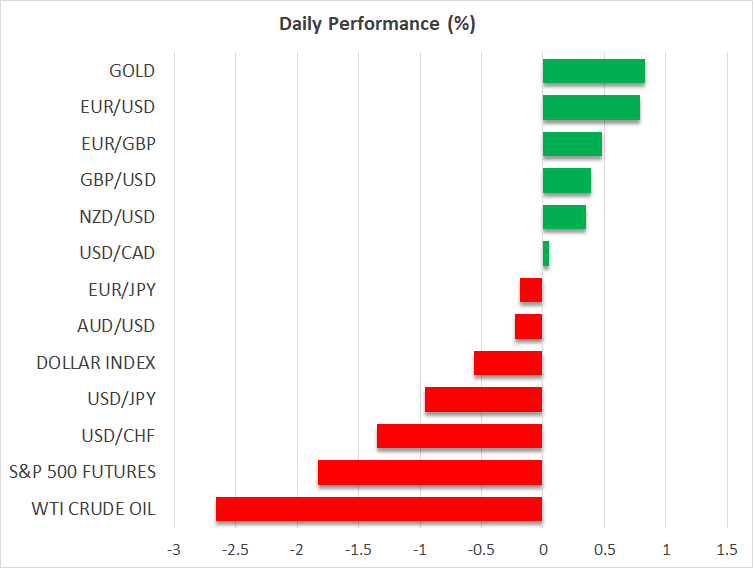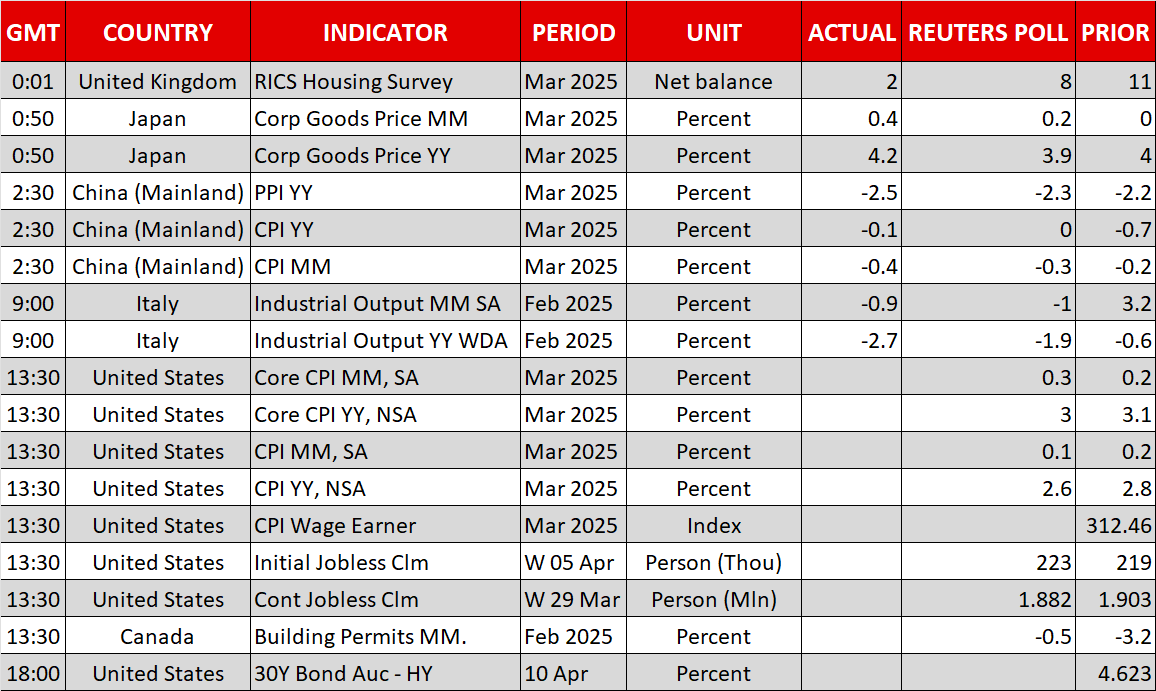- Trump announces 90-day tariff pause on many nations
- However, he increases duties on Chinese imports
- Wall Street skyrockets, Nasdaq rallies more than 12%
- US CPI inflation in focus as recession fears ease
- Gold gains more due to US-China tensions, oil rebounds
Three-Month Pause, but More Tariffs for China
Wall Street skyrocketed yesterday, with the S&P 500 recording its biggest winning day since the Great Recession and the tech-heavy Nasdaq rallying more than 12%, the most since 2001.
The astounding rebound was the result of US President Trump’s decision to declare an immediate 90-day tariff pause on dozens of nations, though he kept the 10% baseline duty on nearly all imports to the US. The pause came less than a day after the duties kicked in, raising hopes that the US government could be willing to sit at the negotiating table with many of its trading partners to find common ground.
That said, China had a different treatment. Following the announcement by the world’s second-largest economy that they will raise levies on US products to 84% and proceed with restrictions on nearly 20 US firms, the US President raised the 104% tariff on Chinese imports that came into effect yesterday to 125%.
The further escalation in the US-Sino trade conflict suggests that the worst may not be behind us, even after the 90-day pause announcement reduced the odds for a US recession. After all, no one can say with certainty that Trump will not change his mind in the following days.
US CPI Inflation Enters the Limelight
That said, for now, the easing of recession fears is turning the spotlight back to inflation and today’s CPI data for March. Expectations are for the headline CPI rate to drop to 2.5% y/y from 2.8% and for the core CPI rate to tick down to 3.0% from 3.1%. Nonetheless, the strong jump in the prices subindex of the ISM manufacturing PMI may be posing some upside risks.
An upside surprise could add credence to the Fed’s view that there is no urgency to proceed with aggressive rate cuts, a view also expressed in the minutes of the latest FOMC meeting, which were released yesterday. Although members appeared concerned about Trump’s trade policy on economic growth, they signaled that they will not be quick to ride to the rescue because they believe tariffs could refuel inflation.
Following Trump’s 90-day tariff pause, investors have scaled back their Fed rate cut bets. From anticipating more than 100bps worth of rate cuts this year, they are currently penciling in 80bps. This is still more of a reduction than the two quarter-point cuts indicated by the Fed’s latest dot plot.
Thus, there may be some room for investors to take more rate cut bets off the table. This may allow the US dollar to gain some ground, but whether the data could lead to a long-lasting recovery remains doubtful. After all, the dollar did not benefit that much from the tariff pause announcement and expectations of higher borrowing costs for longer due to fears of higher inflation could revive concerns about the performance of the US economy.
Gold Gets Closer to Record High, Oil Recovers Some Losses
Gold did not respond the way it usually does when market concerns ease. It continued to march north, perhaps as the escalation of trade tensions between the US and China prompted some investors to hold onto safe-haven positions. What’s more, the conflict may have prompted China to cut its US Treasury purchases and to divert more flows into gold.
The 90-day tariff pause allowed oil prices to rebound as well. However, the recovery in oil was much smaller than the one on Wall Street. Maybe that is due to the fact that China, which is the world’s largest oil importer, was still hit with a damaging 125% tariff rate. The decision by the OPEC+ group to speed up its production in May is also exerting pressure on the black liquid.
